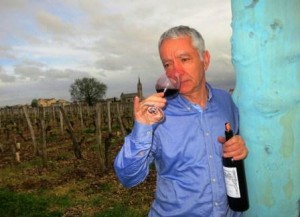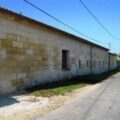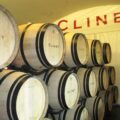2011 L’Eglise Clinet – From 90% Merlot and 10% Cabernet Franc, the wine is aged in 80% new oak. Complex aromas of flowers, chocolate, plum and truffle build in the perfume. On the palate, the wine is silk and velvet. This is a powerful, lush, rich, tannic, full-bodied and structured vintage of L’Eglise Clinet. It will require time to age, soften and develop. 95-96 Pts
2011 Petite Eglise From 100% Merlot planted on gravel soils, the wine will be aged in 50% new oak. Kirsch, earth and black cherry, medium body and fresh red cherries are found in this forward-styled little brother of L’Eglise Clinet. 89-90 Pts
Jeff Leve “Where does the fruit come for La Petit L’Eglise?”
Denis Durantou “La Petit L’Eglise is not a second wine. It always comes from separate parcels than L’Eglise Clinet. So it is its own unique wine.”
Jeff Leve “How much wine will you have with your 2011 L’Eglise Clinet?”
Denis Durantou “We’ll have the same quantity of 2011 L’Eglise Clinet as we did last year.”
Jeff Leve “What went well for you during the 2011 growing season?”
Denis Durantou “It was an early vintage. It’s always a good to harvest early. In 2011, the Merlot was harvested starting September 12. The Cabernet Franc was picked September 24.”
Jeff Leve “Are your parcels planted to Merlot or Cabernet Franc, or are both varieties planted in the same plot?”
Denis Durantou “Cabernet Franc is planted with Merlot in the same parcels. They can also be harvested at the same time, depending on the maturity of the berries.”
Jeff Leve “How do you decide when to pick for the 2011 L’Eglise Clinet?”
Denis Durantou “It’s simple. I taste the fruit in the vines. When it offers chocolate and fig flavors, it’s time to pick as soon as possible. If you wait after that point, the berries will lose their freshness.”
Jeff Leve “What did you look for in your 2011 L’Eglise Clinet?”
Denis Durantou “The growing season was not difficult for me. 2011 was a problem for growers that used fertilizers. We never use fertilizers at L’Eglise Clinet. The key was waiting for ripe skins to produce 2011 L’Eglise Clinet. The seeds had a hard time ripening. But that doesn’t matter because we’re looking for tannins in the skins. Waiting for ripe seeds would have been impossible this year. By the time they ripened, the fruit would have lost freshness and acidity.”
Jeff Leve “What do you think about your 2011 L’Eglise Clinet Pomerol this year?”
Denis Durantou “2011 L’Eglise Clinet is a better vintage than 1998. But other years have been better than 2011. But I do not want great vintages every year. I like variety and the differences between the wines.”





